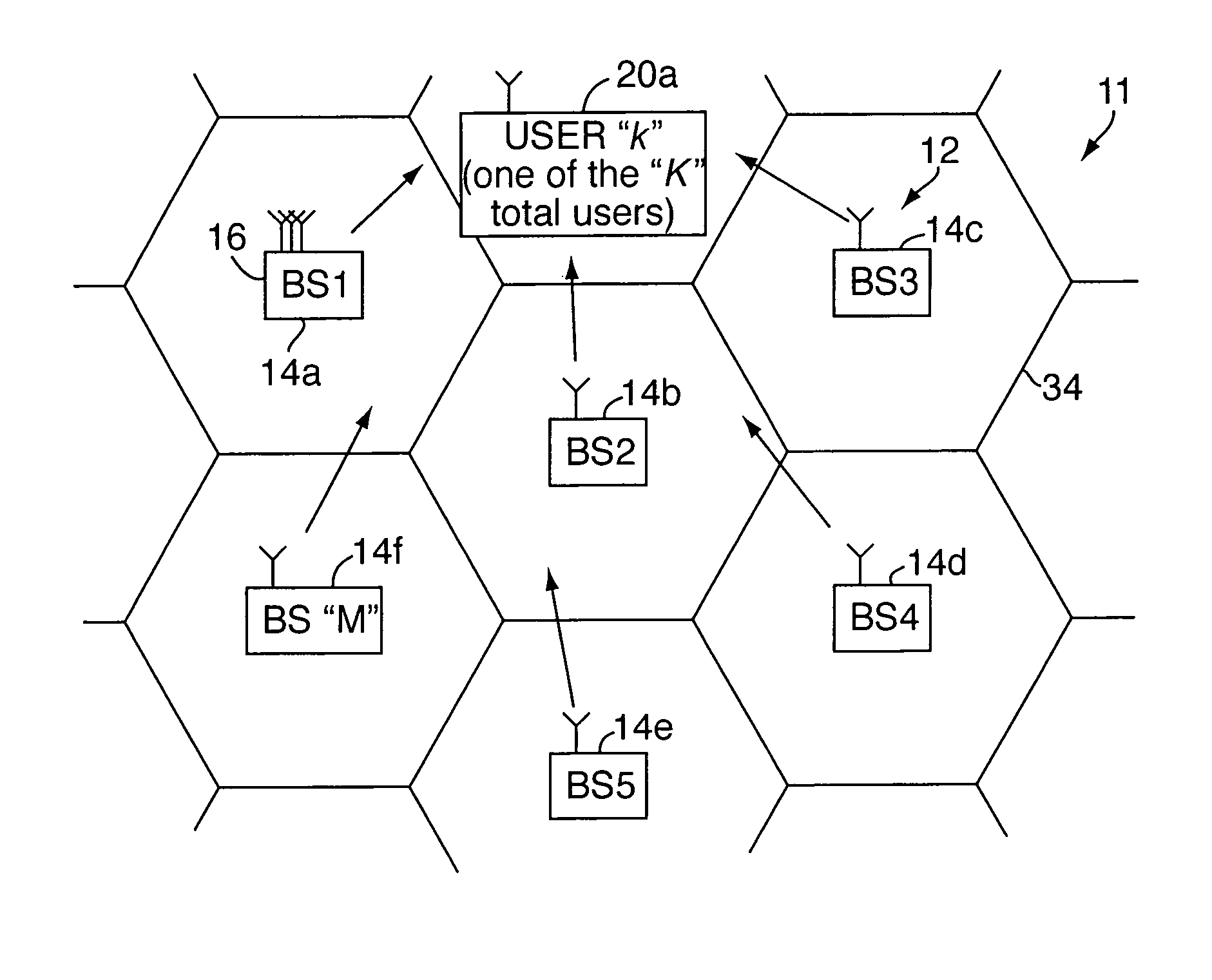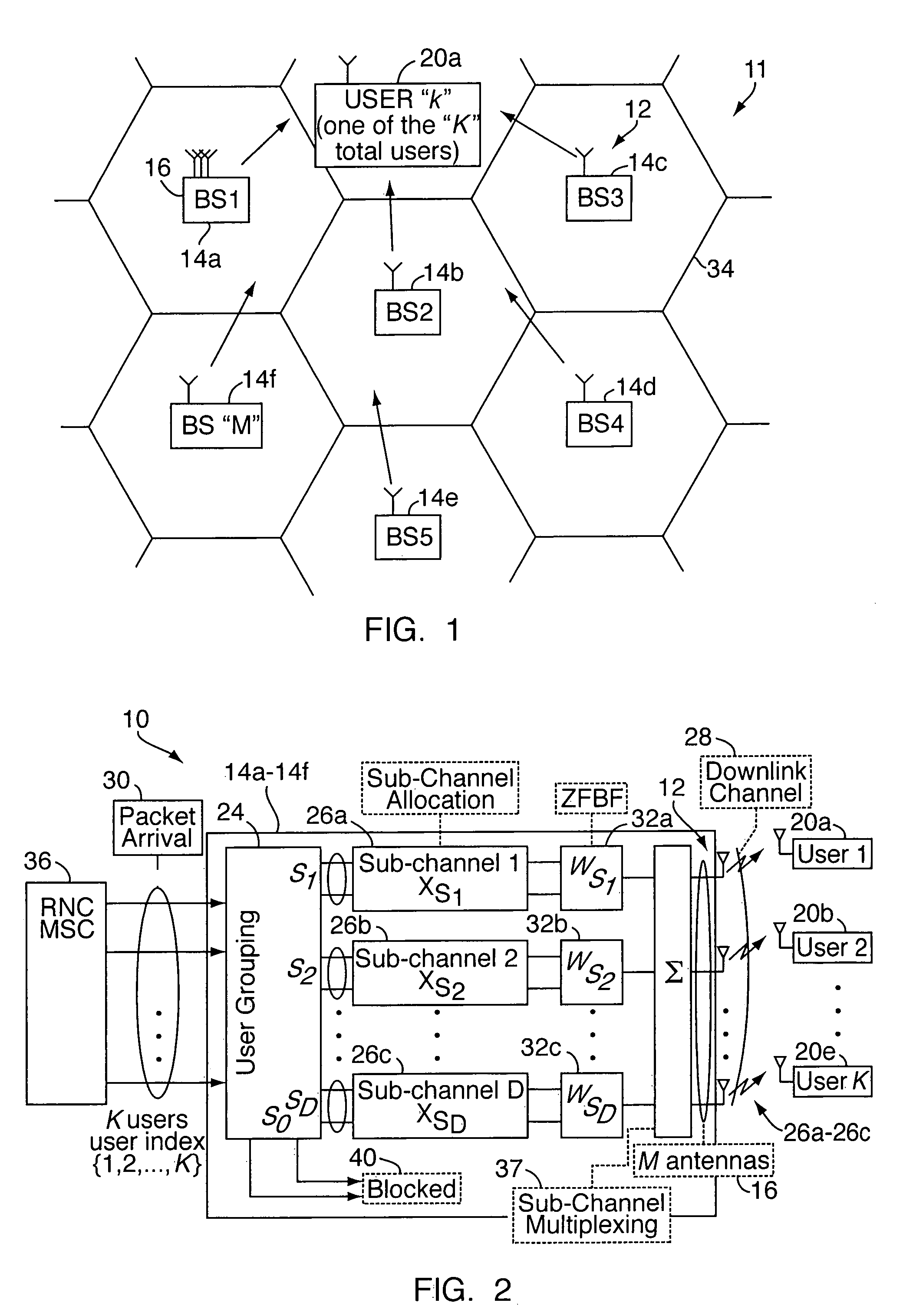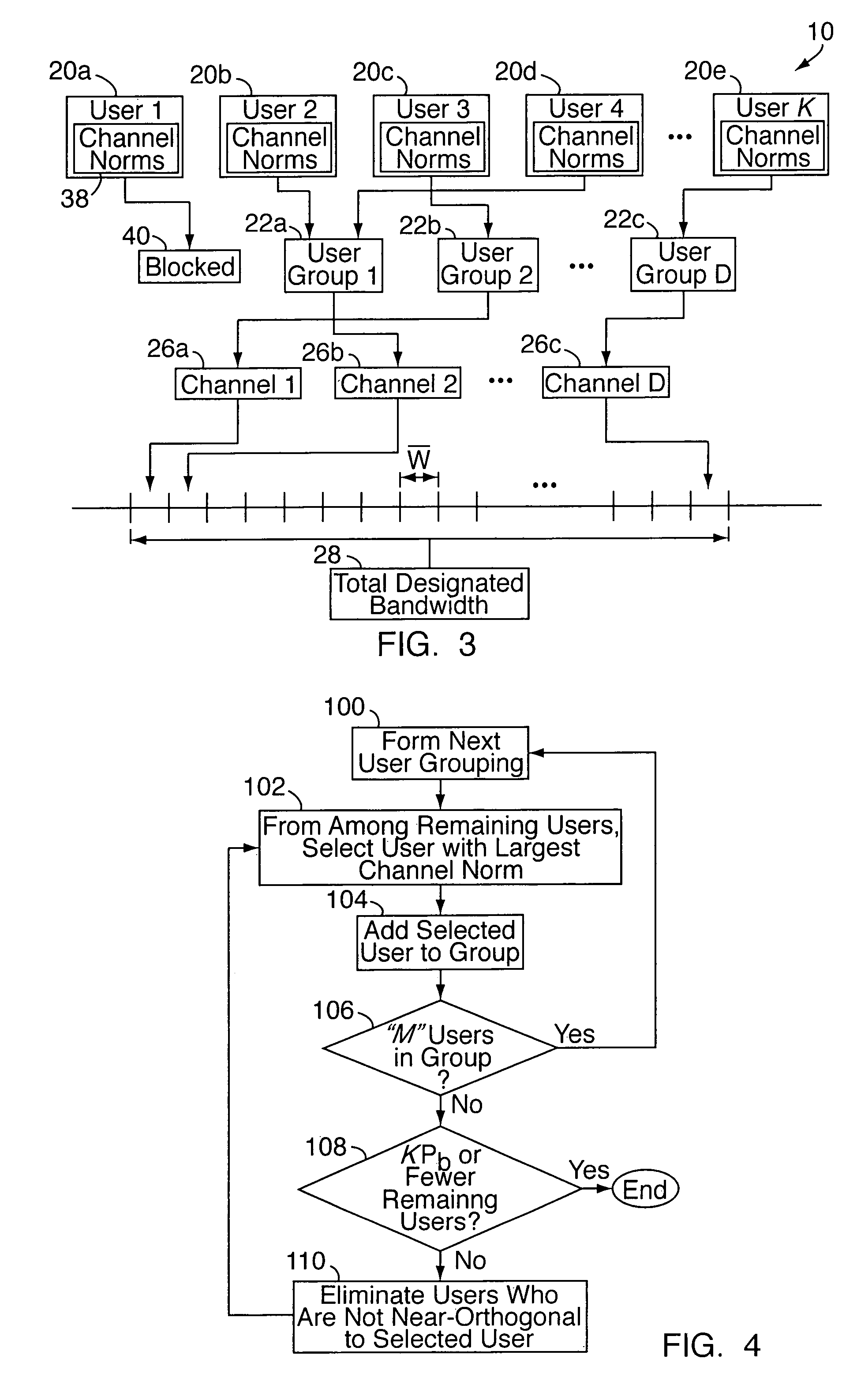Method of grouping users to reduce interference in MIMO-based wireless network
a wireless network and wireless network technology, applied in the field of communication systems, can solve problems such as difficult implementation of dpc in practical systems, and achieve the effects of optimal performance, optimal performance and optimal performan
- Summary
- Abstract
- Description
- Claims
- Application Information
AI Technical Summary
Benefits of technology
Problems solved by technology
Method used
Image
Examples
Embodiment Construction
[0024]Turning to FIGS. 1-13, the present invention relates to a method and system 10 of MIMO communications in a multi-base wireless network 11. The network 11 includes a plurality of spatially distributed transmission sources 12 (e.g., multiple base stations (“BS”) 14a-14f each having one or more spaced-apart transmit antennas 16) and a plurality of wireless units 20a-20e. (By “wireless unit,” it is meant a mobile phone, wireless PDA, computerized vehicle navigation system, wireless devices with high-speed data transfer capabilities, such as those compliant with “3-G” or “4-G” standards, “WiFi”-equipped computer terminals, or the like.) In operation, the wireless units 20a-20e are logically divided into a plurality of user groups 22a-22c, through operation of a semi-orthogonal user selection or grouping sub-system 24. For example, the user selection sub-system 24 may implement a heuristic user selection algorithm based on near-orthogonality. Each user group 22a-22c is assigned a di...
PUM
 Login to View More
Login to View More Abstract
Description
Claims
Application Information
 Login to View More
Login to View More - R&D
- Intellectual Property
- Life Sciences
- Materials
- Tech Scout
- Unparalleled Data Quality
- Higher Quality Content
- 60% Fewer Hallucinations
Browse by: Latest US Patents, China's latest patents, Technical Efficacy Thesaurus, Application Domain, Technology Topic, Popular Technical Reports.
© 2025 PatSnap. All rights reserved.Legal|Privacy policy|Modern Slavery Act Transparency Statement|Sitemap|About US| Contact US: help@patsnap.com



